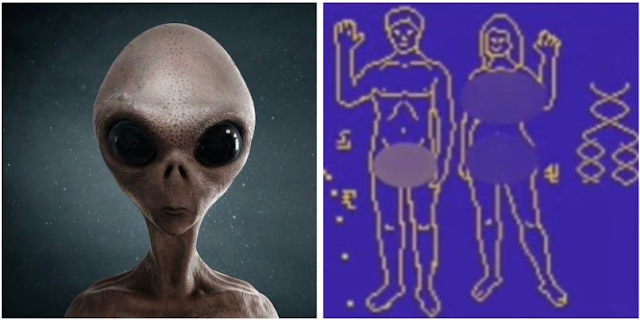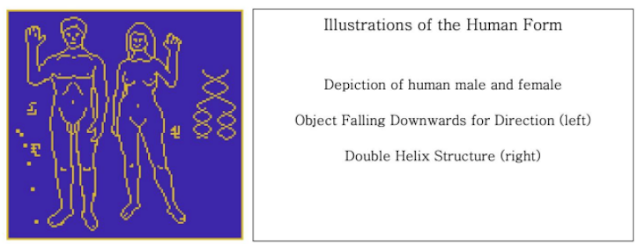A rendering of an atom of hydrogen. an earthly map. a picture of the double-helix structure of DNA. These and other signals, encoded in the binary system of zeros and ones, are intended to appeal to extraterrestrial life forms in the Milky Way galaxy and entice them to communicate with Earthlings.
And if they don't, perhaps the few images that scientists want to send into space will.
The open-source scientific repository Arxiv recently published a proposal for interacting with aliens by researchers from a variety of organisations, including NASA's Jet Propulsion Laboratory.
Researchers have a logical justification for include pixelated drawings of naked humans in the mix, even though it may initially seem strange. They explain that aliens would naturally want to know what humans look like.
The scientists argue that the page with the two human figures "may readily be regarded as one of the most significant elements of the message" and that the physical representation "would undoubtedly be of tremendous interest."
It won't be the first mail to contain nudity. In 1972, scientists launched the Pioneer 10 space mission, which featured a little gold plaque with an image of a naked man and woman, along with other messages and information about Earth's position in the galaxy. While Pioneer 10 was 7.6 billion miles away when it broadcast its final signal in January 2003, it is unclear if extraterrestrials ever got the message.
"A Beacon in the Galaxy," or BITG for short, is the name of the most recent attempt to contact extraterrestrial life. It is a follow-up to an interstellar message that was delivered in 1974 from the Arecibo radio observatory in Puerto Rico to a globular cluster some 25,000 light-years away. A stick-figure sketch of a human, a DNA double helix, the atomic weights of the substances required for life on Earth, and a drawing of the telescope that will implode in 2020 were all included in that memo.
When it launched Voyager 1 and 2 in 1977, NASA also made an effort to get in touch with extraterrestrials. A 12-inch, gold-plated copper gramophone record comprising images and sounds from Earth, as well as greetings in 55 different languages, was carried by both spacecraft.
In the 1980s, a more unconventional (and unofficial) broadcast emerged as a result of these austere messages. Joe Davis, a scientific artist, took issue with NASA's failure to include the female reproductive system in their communications. In order to create a mashup of electronic music and spoken words, he recorded the vaginal contractions of ballerinas and other ladies. Using the million-watt radio telescope at the Massachusetts Institute of Technology, Davis secretly sent "Poetica Vaginal" into space.
The suggested message is simpler and won't make any allusions to human civilization, although including the human shape. The experts contend that including photos of the best works of human art and architecture would make the message too large and the aliens might not comprehend what they signify.
"It is not certain that humans would understand the meaning of a communication incorporating these depictions," they wrote. Instead, they want to concentrate on arithmetic and physics, which are subjects that any intelligent living form should be able to understand.
The scientists hope to send the message someday from the potent Five-Hundred-Meter Aperture Spherical Radio Telescope (FAST) in China and the Allen Telescope Array in California to a particular region of the Milky Way that they believe is the most likely location for life to have originated. For now, the message is essentially a rough draught.
No matter how far in the future that occurs, their ultimate objective is to initiate communication with intelligent alien beings. And although if the scientists are following Carl Sagan's open-minded philosophy, the nude images are meant to serve a functional, non-sexual purpose. Even if the aliens are short, gloomy, and obsessively sexual, if they are here, I want to know about them, as the astronomer once stated. te.







0 Comments